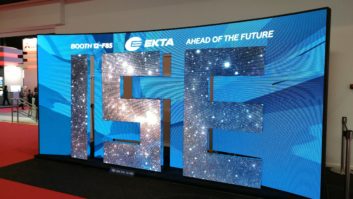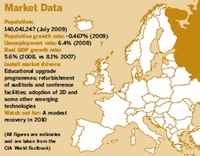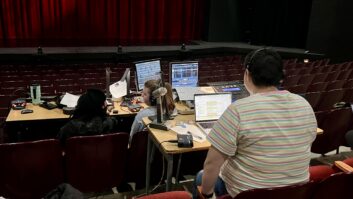
There is something of a dichotomy when it comes to intercom systems in the AV world: they are often an afterthought or the last line item on the list when equipping a production or installation, and yet with the huge demand for complex, sophisticated productions the actual need for more complex, dynamic communications is growing.
Intercom systems are crucial for many reasons, not least safety, particularly in high-risk installations or productions like theme parks or pyrotechnic shows. They ensure the smooth running of events and productions by keeping people informed in real time; and they allow the most capable and experienced team members to give advice to the less experienced. For example, if the head audio engineer located at FOH identifies that there is an issue with a stage monitor, they can easily communicate with their A2 backstage to resolve the situation – all without leaving their FOH position. In addition, people today are working in new ways that require constant communication, whether that is collaborating globally or sharing content across campuses or broad locations.
Given the impact of clear and immediate communication on any kind of production, be it a church service, a multi-site corporate conference or a live concert, it is surprising – but not uncommon – that intercom is not considered at all, or at least not until very late in the design process.
Workflow
There are several possible explanations for this. First of all, intercom is not nearly as glamorous or obvious as many of the more high profile equipment purchases, whether those be screens/projectors/visualisation/speakers/mixing console, or video switchers. When people are thinking about production tools they are often thinking about ‘content workflow’ – the things that make the content – and not the tools that enable people to do it well or efficiently, which would be more in the realm of ‘production communication workflow’.
Secondly, there are a lot of inexpensive workarounds like walkie talkies, which might give people the mistaken impression that it’s a non-issue. However, in today’s world where productions are ever more complex, these solutions are rarely adequate to the task at hand.
Third, consultants and designers who are well-versed in intercom often specify a highly flexible and robust solution which, depending on the client and their budget, can induce a kind of ‘sticker shock’. This often leads to intercom being scaled down or even removed because the end user’s technical staff is looking for a place to make some substantive cuts to show financial stewardship, rather than going back to the drawing board and designing a system that really optimises their investment to match their needs.
“Including intercom early on as a fundamental part of an installation opens up so many more possibilities”
Of course, companies like Clear-Com can help production teams at whatever stage they want help but installing a communications system as an afterthought can restrict flexibility in terms of how certain needs are addressed because a lot of the infrastructural thinking will have been locked down by the time they come to us. Including intercom early on as a fundamental part of an installation opens up so many more possibilities and allows production teams to do things far more efficiently than they would otherwise be able to.
Project scope
In our experience, the House of Worship market more than some others tends to include communications as a key part of a new system, as do some projects designed by real theatrical specialists, but even those sometimes miss the multi-geographical part of the project scope. Higher spec corporate AV customers have a habit of specifying a digital matrix intercom-based solution, when often a digital partyline solution with some IP linking would be adequate and much less expensive.
There are many different routes to suit requirements and budgets and lots of opportunities for optimisation. New innovations like IP-based systems, mobile application integration, deeper capabilities in digital partyline solutions, SIP integration, and zoned wireless solutions are all serving customers in new ways – while reducing infrastructural requirements such as wiring. For example, a broadcast studio which previously relied on individual cable runs for each channel can now accomplish the same thing with a single IP-based connection with very low latency, saving installation costs and providing additional capabilities.
Obviously we would like people to think about communications as early as possible in the planning process. One way to encourage this is to promote more discussion of ‘production communication workflow’ in the AV market, highlighting real-world user stories of how optimisation of intercom will promote significantly better outcomes. At Clear-Com we are focused on presenting our solutions based on different types of workflows, characterising the differences, advantages and disadvantages to each as it applies to distinct applications.
Value and importance
Another longer-term goal is to promote the expansion of the production communication workgroup in ways that enable more people to be touched by the intercom, thus having more people in the production able to experience and value the importance of intercom. We have been doing this by using intercom-associated apps on mobile devices to extend the overall communicating group efficiently, such as dispersed teams or those working across a wide area such as a music festival or a university campus connecting their own devices securely to the core system over cellular Wi-Fi connections.
These initiatives are underway within the Clear-Com corner of the communication world and we are already seeing light bulbs going off above people’s heads everywhere we go with these messages. Opening up this conversation with real-world examples can make a substantive difference to planning for future projects.







